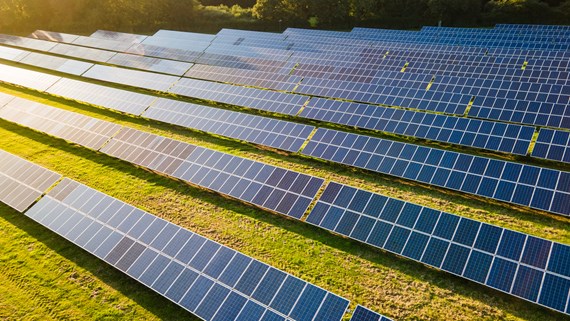Solar farms and Inheritance Tax
Insight

Solar farms have become a particularly attractive option in recent years as rural estates look to diversify and increase income streams (see Patrick Hammond’s article here). However, turning large parts of an estate over to solar can have significant Inheritance Tax (IHT) consequences which must be considered at the earliest stages of the project. Sensible tax planning upfront can dictate major structural changes to the overall project and ensure that opportunities to minimise a later IHT liability are not lost. Leaving this until the solar farm is operational is likely to be too late...
The key issue
The main problem from an IHT perspective is that a solar farm will usually take land out of agricultural use (on which Agricultural Property Relief (APR) would likely have been available) and also out of the farming trading business (which may otherwise have qualified for Business Property Relief (BPR)) and instead turns it into an investment asset.
While BPR may still be available on the basis of a Balfour analysis of the whole estate, this will not always be the case, especially given the high income streams arising from the solar farm lease compared to the farming income from the rest of the estate (which may well be making a loss overall). We have seen examples where the net income of the estate is attributable in full to the solar enterprise, thus bringing into question any Balfour analysis. The value of the land subject to the solar farm will also increase, probably as soon as planning permission is granted if not before. This article examines possible solutions to mitigate or eliminate the detrimental effect of solar farms for IHT.
Retaining agricultural use
It is not uncommon for solar farms to permit some continued agricultural use of the land, most obviously by allowing sheep to graze under the solar panels, although other agricultural uses have been reported (for example, bee keeping). This agricultural use may allow the landowner to obtain APR for the land, but this is by no means guaranteed. APR could still be denied where it cannot be said that the primary use of the land is agricultural.
Even if APR is available, it will only cover the agricultural value of the land (likely to be less than the open market value given the solar farm) thus leaving a difference which, absent other reliefs, will be taxable. As such, continued agricultural use of the land does not provide a complete solution.
Next generation planning
While much will depend on the individual circumstances of the landowner, there may be a tax planning opportunity to transfer the land over which the solar option will be granted to the next generation before the value of the land increases, thereby banking the IHT reliefs that are available at that stage. This needs to be done early and before the option agreement is signed. Although any increase in value is unlikely to occur before the option is exercised, it is sensible to avoid having to novate the agreement later on should the landowner change (which might require the developer’s consent). The transfer could be effected either outright or by a structure such as a trust or partnership.
For example, the land might be transferred into a trust for the benefit of future generations with APR or BPR being claimed in relation to the IHT on the chargeable lifetime transfer going into the trust, and holdover relief for the CGT. Similarly, where the land is already in trust but subject to a qualifying interest in possession (and so taxable on the life tenant’s death) the life tenant might consider surrendering his or her life interest in favour of discretionary trusts, claiming the same reliefs as above.
Such a transfer would remain vulnerable to a supplementary IHT charge within seven years if the transferor dies within that period, as well as to a possible clawback of APR / BPR (because the land no longer qualifies on the death). Steps can be taken to mitigate this, however, and it should be noted that the value of the land for the purpose of calculating any supplementary charge is that at the date of the transfer (so without the potential value uplift which the solar farm brings). In addition, APR / BPR is allowed for the purposes of calculating the value of the transfer when looking at cumulation in relation to a series of transfers prior to death for IHT purposes.
While land held in a discretionary trust will be subject to ten-year anniversary IHT charges at a maximum of 6 per cent, the tax can be paid in instalments over a ten-year period and the higher income streams from the solar farm generally mean that trustees are in a position to accumulate income to use for payment of the tax.
Solar farm development in-house
Although less common, we do sometimes see estates undertaking the development of the solar farm themselves which may provide the opportunity to claim BPR in relation to the solar business.
While the complexities of such a structure are beyond the scope of this article, an example would be for the landowner to lease the land on which the solar farm will be built to a partnership (LLP) for a peppercorn rent and take fixed drawings from that partnership equivalent to the rental payments had the lease been granted on arm’s length terms. The landowner brings the land to the partnership and the developer the solar farm development expertise. The partnership develops the solar farm and holds the contracts with the grid. There should then be an opportunity after at least two years of ownership for the partnership interest to be transferred to the next generation, either outright or in trust, and BPR claimed as and when a taxable event arises.
Conclusion
A solar farm development can have a significant impact on the IHT treatment of the land and so this should be considered early on in the process. Detailed tax advice may be required and new ownership structures put in place prior to signing the option agreement with the solar developer or undertaking the development, so plenty of time should be allowed for this and the cost included in the overall project budget.
If you require further information about anything covered in this briefing, please contact Isabel Paintin or your usual contact at the firm on +44 (0)20 3375 7000.
This publication is a general summary of the law. It should not replace legal advice tailored to your specific circumstances.
© Farrer & Co LLP, February 2023






